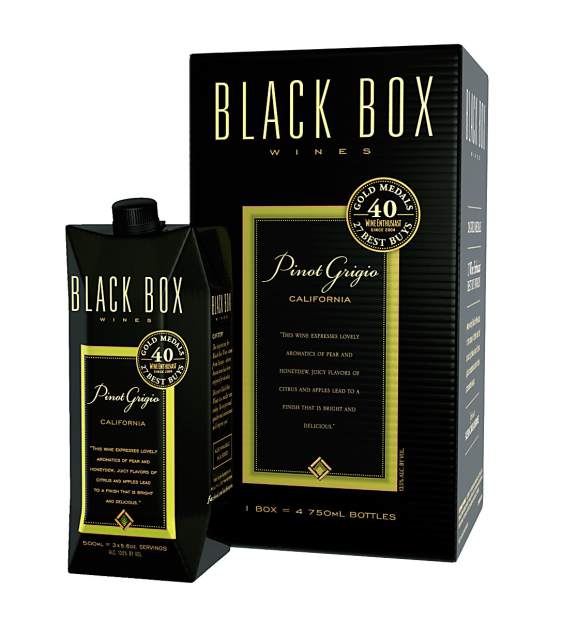WineInk: Bottles, boxes, and cans

Summer is fleeting, and there are precious few weekends left for sipping some wine under the stars in the great outdoors. But if you have the time for a camping trip to one of our local campgrounds, you might find that wine is being consumed in different ways. People on overnight trips still bring their juice in bottles, yes, but also in boxes and, more so than in the past, cans. The same is true at other al fresco outings, like summer concerts and picnics. It is not unusual these days to have fresh wines served up from different and lighter containers.
My summer began with a trip to Denver and a tasting of canned wines at the Hotel Teatro. The wines were from a California company called Maker Wine, which has contracted with some hot West Coast winemakers to put fine wines in cans. More on Maker Wine in a moment, but the experience of both sipping wine from a can and popping the top and pouring wine into a glass from a tin vessel caused me to consider just how we store our wines.
Personally, I like bottles for wine. Perhaps it is the tradition, maybe it is because I am in a stage of life where change is harder to accept. Or maybe it is because bottles are just better.
All may be true. But after centuries of storing wine in glass, it might be time to begin to rethink how we package and serve our wines. Especially given the state of the planet.
Of course, not all wines are appropriate for changes in the way in which they are delivered to the public. Fine wines — those that come from prized vineyards, that are aged in barrels for months and created to age longer still into the future before consumption — are best stored and served in bottles. But for young, fresh, “drink ’em now” wines, putting them in a box or a can may well be the responsible thing to do.

The most obvious reason to make a change is that, simply put, glass is heavy. A glass wine bottle weighs in at about a pound and a quarter when empty. Fill it with 750 milliliters of wine, the amount in a full bottle, and the weight of the bottle doubles to 2.5 pounds plus. Next time you carry a case of wine from your car to your kitchen, you’ll be reminded that you are carrying 30 pounds of weight.
Also, the carbon footprint of a glass of wine is dominated by the energy-intensive process of making bottles and then shipping them around the world on their journey from the winery to the wholesaler to the retailer to you, the consumer. And while glass bottles are recyclable, far too few of them end up being returned. An Environmental Protection Agency report in 2018 reported that less than a third of used glass bottles are recycled, meaning two of every three bottles used must be remade from scratch.
It is much more efficient to make a box to store, ship, and sell wine in. The components — an exterior box, an interior bag, and a spigot — require much less energy to produce. Some studies suggest that the production of a three-liter box of wine requires up to 90% less energy than that required to make a single glass bottle. And subtracting a pound per 750 milliliters of wine means that the costs and the environmental footprint associated with getting the wine to your glass is also diminished. Which, in many cases, drives the cost of wine dramatically downward.
Most box wines come in three-liter boxes, which is the equivalent of four bottles. The boxes are easier to carry than bottles, and, when opened and wine is dispensed through the spigot, the bag collapses around the wine, keeping oxygen at bay and allowing the wine to stay fresh for four to six weeks.
But the bottom line is that the quality of the box of wine is only as good as the wine that goes into the container to begin with. I can vouch that the boxes of French wines produced by Famille Perrin boxed under the La Vieille Ferme label with a rooster on the box are great wines to have sitting on your shelf or in the fridge. They box a white (grenache blanc, vermentino, and ugni blanc), a red (syrah and grenache), and a rosé in the three-liter boxes that sell for about $20, or the equivalent of less than $5 a bottle.
Perception begins and ends with the way the wine tastes. An unappealing glass of wine is not worth it, even if it is a bargain and less impactful on the environment. But if you can pair a good glass of wine with a package that is more environmentally friendly at a fraction of the cost, then it is a win-win.
Such is the case with the Maker Wine cans. Maker Wine, a women-owned wine company, is not just riding the alternative packaging wave — they are creating the tsunami. The company markets a variety of high-end wines in slim, 250 milliliters single-serving cans. They contract with quality wine producers and can wines, which would otherwise be bottled. Their cans have a protective coating on the inside that ensures they do not transmit an aluminium taste — just the flavors of the wines as the winemakers intended.
The question often arises, “Do you drink canned wine from the can, or do you pour it into a glass?” If you are at home, these canned wines are good enough to deserve stemware. But if you are under the stars, feel free to sip from the can.
Enjoy those summer nights.









